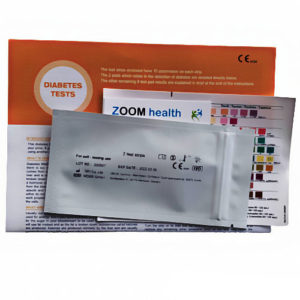The holiday season often revolves around food, friends and festivities. But when you have diabetes, navigating all the tempting treats can feel tricky. You may worry about the impact on your blood sugar levels. However with some planning and a few adaptations, you can still participate in the merriment of the season.
Be Mindful Of Blood Glucose Levels
It’s normal for readings to run a bit higher over the holidays due to changes in activity levels and routines. But aim to avoid prolonged high blood sugar as over time, this increases the risk of diabetes complications. Make sure you have enough medications and supplies during the break when GP offices are closed. Also know what to do if you become ill.
Have An Action Plan If Levels Spike
Despite your best efforts, blood sugar sometimes runs persistently high due to the perfect storm of holiday stress, tempting food and disrupted routines. Don’t panic, but do have an action plan for getting levels back on track.
First ensure you’re accurately documenting readings so you can discuss trends with your medical team. Check for ketones if blood sugar stays above 13 mmol/L. Sip water to avoid dehydration. Consider temporarily adjusting diabetes medications if advised by your GP. Increase physical activity and dial back on carb-heavy foods. Identify and address what factors might be at play. The key is responding promptly to avoid a medical crisis.
Find Ways To Manage Holiday Stress
Easy blood sugar control starts with inner calm. But the holidays often bring added chaos, expenses, family gatherings, school breaks and disrupted routines – all simmering stressors. Carve out pockets of restorative time for yourself each day, even if just 10 minutes of mindful breathing. Take a relaxing bath or chat with an empathetic friend. Do whatever nurtures YOUR spirit so you don’t hit overload. Don’t hesitate to say no to optional commitments that add pressure. At the end of the day, your health trumps holiday hullaballoo.
Stay Active
While it’s tempting to remain camped out on the couch, fitting in physical activity helps manage blood sugar and pressure. Go for brisk walks, even just to the shops. Jumping about with the children, dancing at a party, or skating at a local pop-up ice rink all help towards keeping healthy during this period.
Make Sensible Choices (but still enjoy yourself!)
Here are some examples of ways you can make your main Christmas meal that bit healthier without compromising on taste.
Turkey: Our recommended portion size for turkey is about two slices. Remove the skin and eat light-coloured meat (breast) rather than dark meat (thigh) to reduce your fat intake. If you have different dietary preferences, there are some great alternatives to turkey – why not try a nut roast, or some fish, like salmon?
Pigs in blankets: Use low-fat cocktail sausages and pierce the skins. Wrap with lean back-bacon (with the excess fat trimmed off) and grill, rather than fry or bake, to allow any excess fat to drain away. Try and limit yourself to one or two pigs in blankets, as they are a processed meat. Eating too much processed meat is linked to heart problems and certain types of cancer. Processed meat can also be high in salt. You could try vegetarian sausages if you prefer a meat-free alternative, but make sure you check the salt content beforehand.
Roast potatoes: Keep the amount of fat you add to a minimum by dry-roasting or using spray oil. Try using baby potatoes with the skin on or sweet potatoes instead, as a higher-fibre option.
Stuffing: Try to avoid high-fat, high-calorie sausage meat. Instead, use vegetarian stuffing, such as sage and onion and cook in a separate dish to the turkey.
Vegetables: Fill at least one-third of your plate with vegetables. They are a good source of fibre and are rich in vitamins and minerals. If possible, steam rather than fry or roast.
After-dinner treat: Of course Christmas wouldn’t be the same without a dessert, such as a traditional Christmas pudding or mince pies served with brandy butter, custard or cream. Make your mince pie without a lid and choose half-fat crème fraîche or natural yogurt instead of double cream or make your own custard but use a little sweetener rather than sugar.
What To Drink
For some people, enjoying a few alcoholic drinks is a part of the festivities. While it’s fine to let loose a little, alcohol and diabetes can be tricky to navigate. Read our tips below to ensure you’re having fun while still staying safe:
- Alternating between alcoholic and soft drinks can help to limit the amount of alcohol you consume and keep you hydrated at the same time. But soft drinks, like fruit juices, tend to be high in free sugars, so keep to just a 150ml serving of these (around one small glass) a day.
- Use sugar-free or diet versions of other soft drinks – they can be used as mixers too.
- One way of reducing calorie intake and the number of units is to choose a lower strength wine.
- Try not to drink too much alcohol, however freely the drink is flowing. If you take insulin, or certain diabetes medications that can cause hypos, alcohol also increases this risk. A hypo is where your blood glucose levels fall dangerously low. It’s not uncommon for some people to mistake having a hypo for being drunk. So, carry hypo treatments around with you and snacks that have carbs in them, eat before you go to bed, wear some medical ID or make sure whoever you’re with knows you have diabetes, and knows how to help with a hypo if you need them to.
- And remember not to drink on an empty stomach as this can increase your likelihood of having a hypo when you’re drinking, or the day after.
Give Yourself Grace, Not Guilt
When you slip up on diet or miss blood sugar readings, it’s easy to spiral into shame and self criticism. But berating yourself only breeds more issues. Talk to yourself like you would a good friend – with kindness and compassion. Everyone veers off course sometimes, especially amidst holiday chaos. Get curious, not angry. Reflect on what factors influenced your decisions then course correct. Tomorrow offers endless opportunities to re-center your health. Meet yourself where you’re at. Progress happens gradually. You’ve got this!
Make Self-Care A Priority
Hectic holiday seasons often neglect one critical thing: rest. Yet downtime provides the mental clarity essential for balanced blood sugar decisions in the long run. Between shopping, baking, parties and more, intentionally schedule in soul-nourishing activities that have nothing to do with the holidays. Perhaps it’s catching up with an old friend, getting absorbed in a craft project or watching nostalgic childhood movies. Do whatever uniquely fuels YOU. Don’t feel guilty about taking time for yourself, even if it means declining an event. Recharge so you show up stronger in other areas of life.
Getting More Diabetes Info and Support
Diabetes UK is the top diabetes charity in the UK, providing help whether you live with diabetes or know someone managing it. Their website, www.diabetes.org.uk, offers a wealth of advice on healthy eating, as well as hundreds of diabetes-friendly recipes to explore. Or you can call their free helpline at 0345 123 2399 to speak with someone directly.
With compassionate support and the latest resources, Diabetes UK aims to empower those impacted by diabetes across all of life’s ups and downs. You don’t have to walk this path alone.
Photo by Zyanya Citlalli on Unsplash
Zoom Health is a leading UK supplier of Home Health Tests and Earplugs






